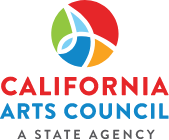It is critical for research on the effects of arts engagement to identify and carefully control for preexisting selection factors that differentiate those who do and do not get exposure to the arts. We prospectively followed a large and diverse sample of preschool children (n = 31,332; 61% Latino, 32% Black, 55% ELL, 81% free/reduced lunch) until they completed 6th, 7th, and/or 8th grade. School readiness was assessed during pre-K, and archival public-school data were collected in middle school. Overall, 40% of students took some kind of arts elective course (music, dance, drama, visual art) during middle school. Black students, males, students with disabilities, those previously retained, and those not English proficient had reduced odds of taking an arts class. Children with stronger school readiness skills at age 4 and stronger academics in 5th grade were more likely to enroll in arts-related courses. Importantly, controlling for prior variables associated with selection into the arts, including prior academic performance, students with exposure to an arts elective in middle school subsequently had significantly higher GPAs and math and reading scores, and decreased odds of school suspension, compared to students not exposed to the arts.
Home > Learning Center > Research & Reports > Selection into, and academic benefits from, arts-related courses in middle school among low-income, ethnically diverse youth

